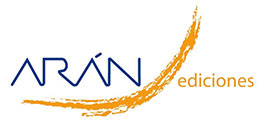Revisión
Association of excessive GWG with adiposity indicators and metabolic diseases of their offspring: systematic review
 Número de descargas:
48971
Número de descargas:
48971
 Número de visitas:
2493
Número de visitas:
2493
 Citas:
0
Citas:
0
Compártelo:
Introduction: It has been reported that excessive gestational weight gain (GWG) during pregnancy is associated with an increase in adiposity indicators and metabolic disorders of the offspring. Objective: The objective of this review, using the Institute of Medicine (IOM) criteria, was to analyze the association of excessive GWG in prospective studies with the adiposity indicators and metabolic diseases of the offspring, and the association of excessive GWG with adiposity indicators and metabolic disease of the ≥ 15 years offspring. Methods: An electronic search was conducted in the MEDLINE/PubMed, EMBASE, and CINAHL databases of prospective cohort studies published from January 2004 to September 2014. Selection was restricted to prospective cohort studies where the definition of GWG was used according to the IOM-recommendations; and prospective cohort studies including offspring ≥ 15 years, independent of using the definition for excessive GWG. Results: Nine prospective cohort studies meet the inclusion criteria. Five studies used the IOM-recommendations for assessing GWG, and six studies assessed adiposity or metabolic indicators of their offspring at ≥ 15 years. In seven of the nine studies, excessive GWG was associated with adiposity and metabolic diseases. Due to the limitations found, the evidence of the association was shown to be low. Conclusions: The results of this review showed, that independently of the criteria used to diagnose excessive GWG, all the included studies, consistently showed an association of excessive GWG with adiposity indicators or other components of metabolic disease early in life, during adolescence or adulthood. However, due to the limitations of the studies the strength of the evidence was low. Better designed studies are warranted to confirm a stronger evidence.
Palabras Clave: Gestational weight gain. Excessive gestational weight gain. Offspring obesity. Offspring BMI.
Artículos más populares
Revisión: Inteligencia artificial generativa ChatGPT en nutrición clínica: avances y desafíos
ChatGPT y otras herramientas de inteligencia artif...
Revisión: Suplementación con micronutrientes y sus beneficios: ¿por qué y cuándo?
Introducción: los micronutrientes participan en la...
-
Licencia creative commons: Open Access bajo la licencia Creative Commons 4.0 CC BY-NC-SA
https://creativecommons.org/licenses/by-nc-sa/4.0/legalcode




